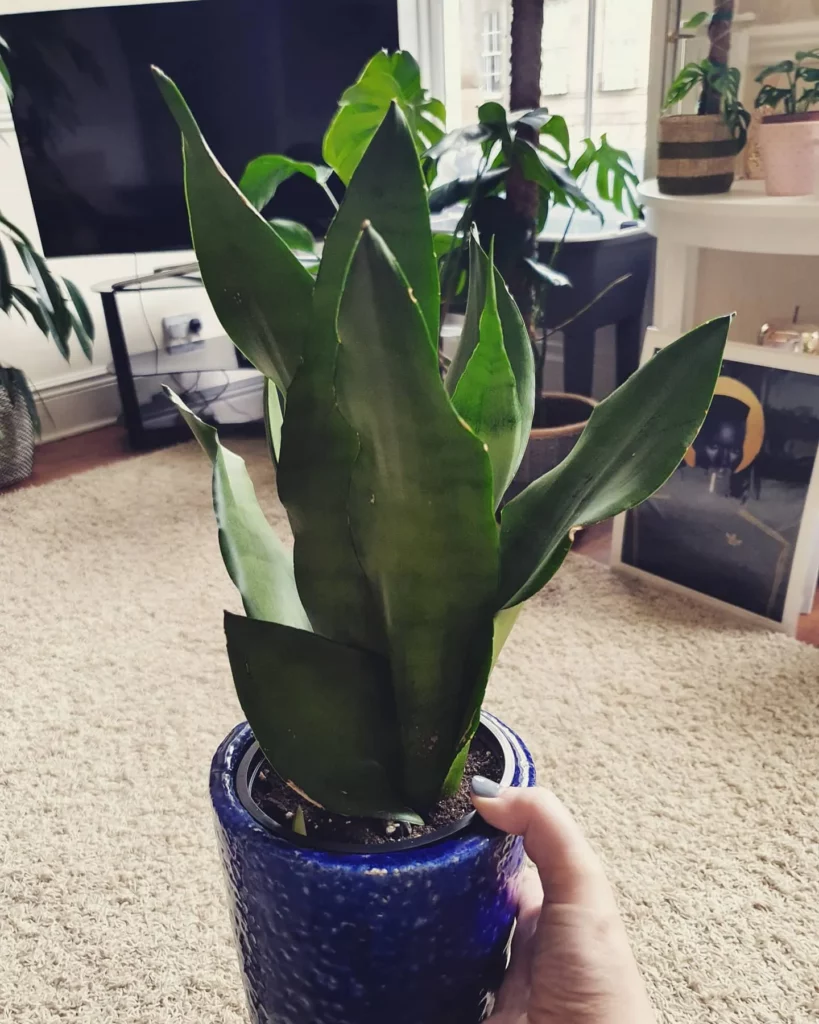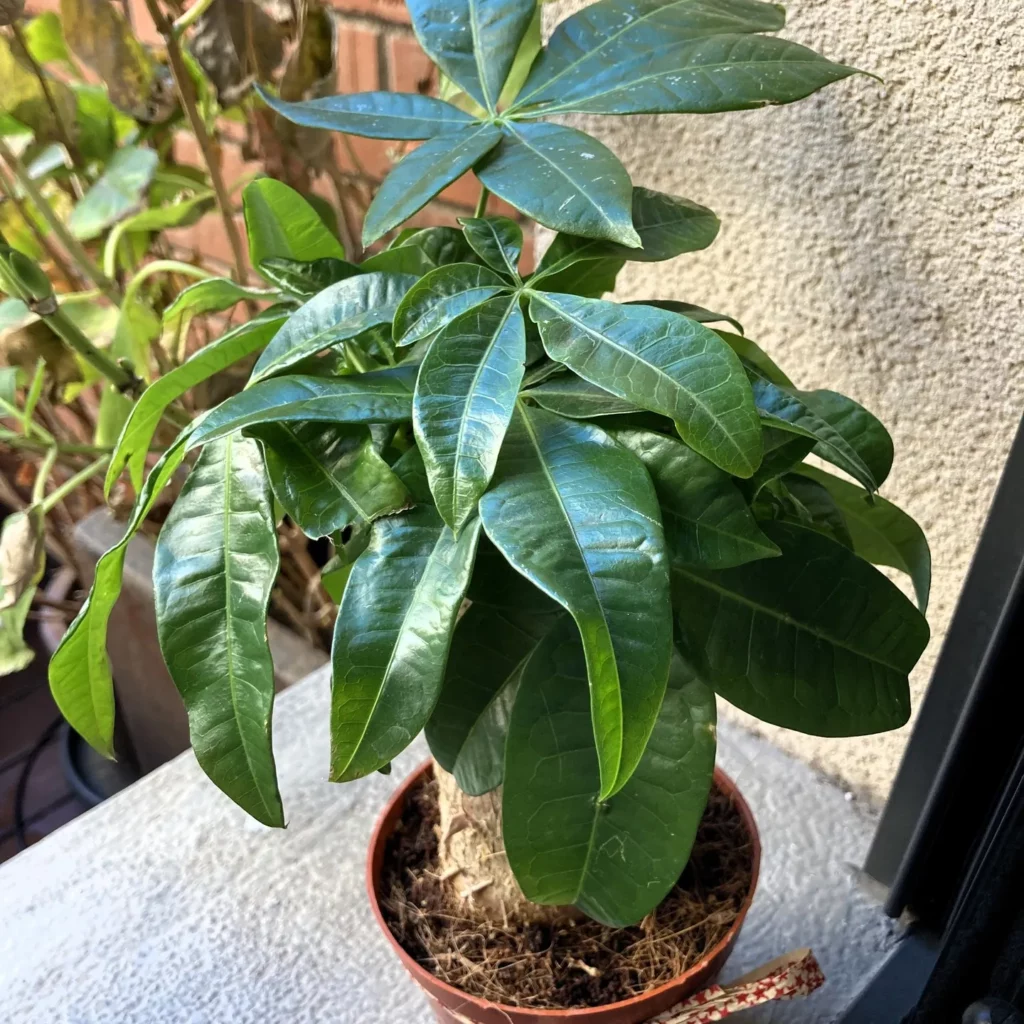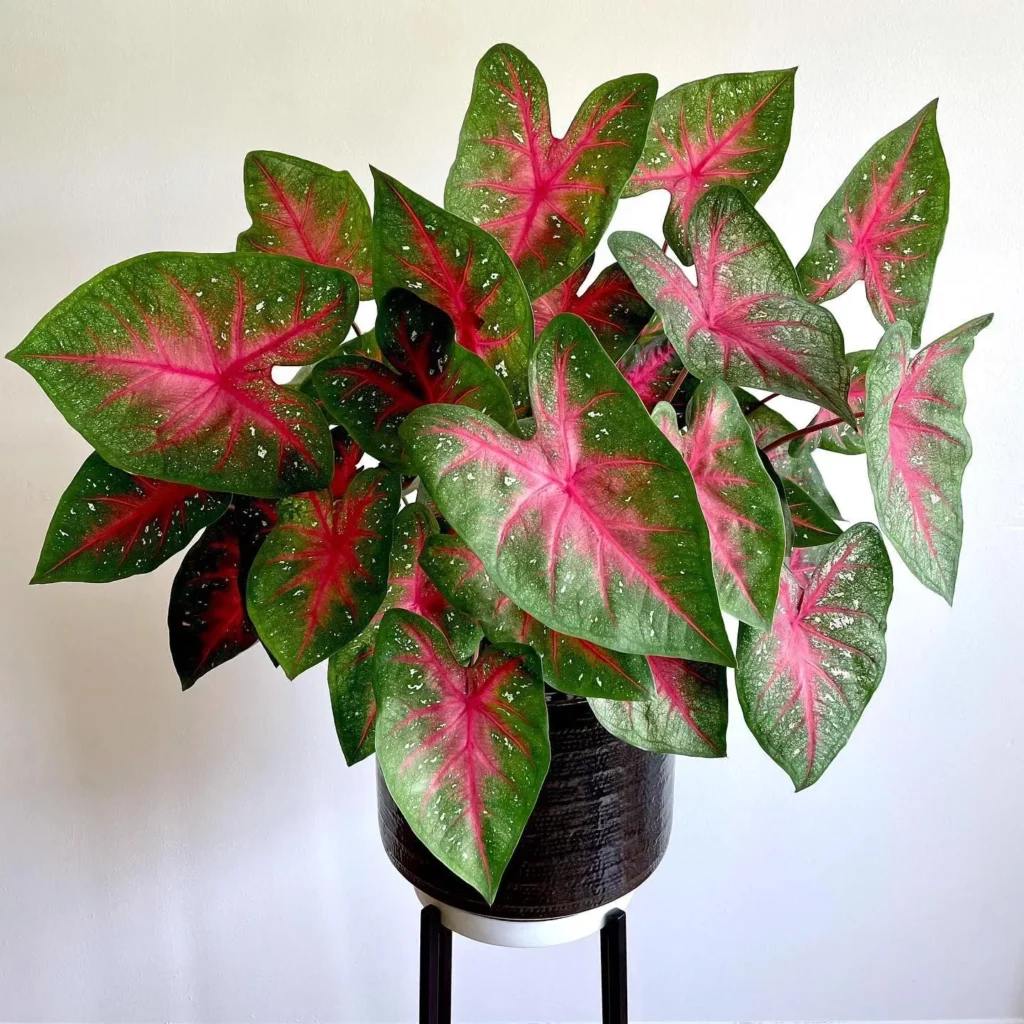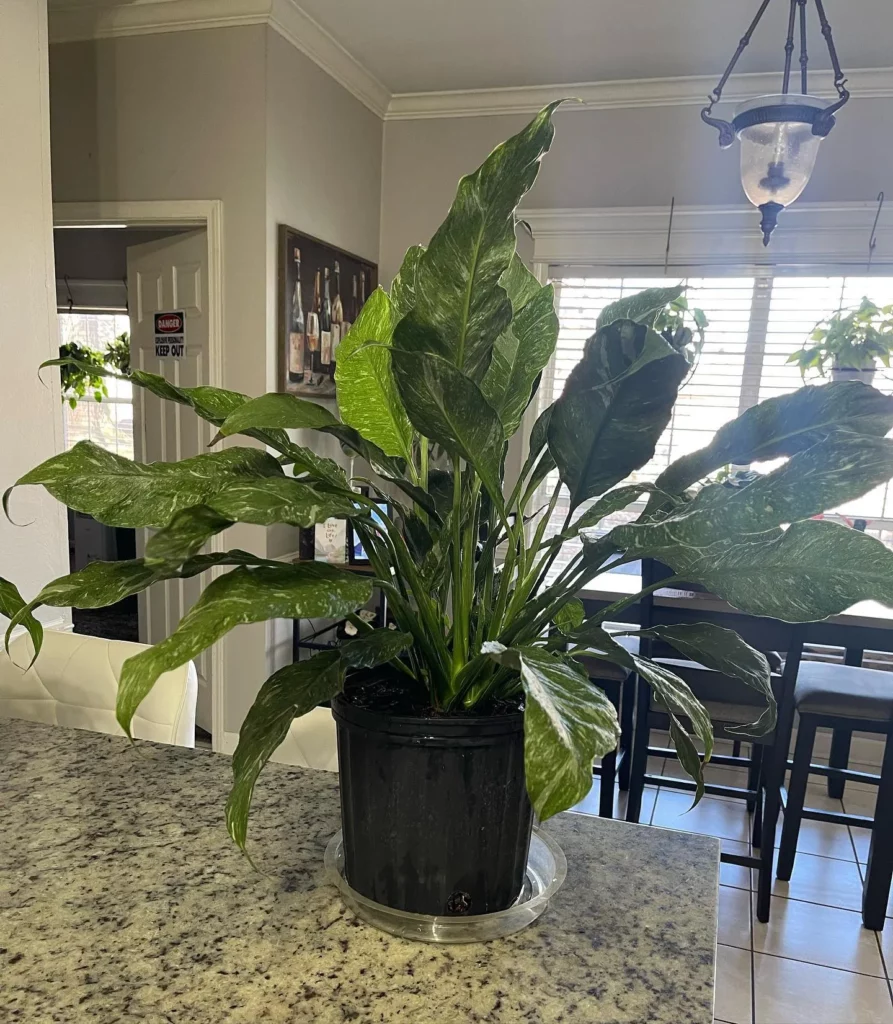Snake plants typically need water every 2-8 weeks, depending on light and humidity conditions.
Welcome to our comprehensive snake plant watering guide! If you’re a plant parent, you know that finding the right watering schedule for your snake plant can be a bit tricky. But don’t worry, we’ve got you covered. In this article, we’ll share all the expert tips and information you need to keep your snake plant healthy and thriving.
Factors Affecting Snake Plant Watering Needs

Several factors contribute to a snake plant’s watering requirements. The amount of light the plant receives is a crucial factor to consider. Snake plants have excellent tolerance for different lighting conditions, ranging from bright light to low light. However, it is essential to adjust the watering frequency accordingly. Plants exposed to more light will require more water, while those in low light conditions will need less.
Temperature and humidity also play a significant role in determining watering needs. Snake plants grown in warmer temperatures and higher humidity will require more water to sustain their growth, while those in cooler temperatures and lower humidity will need less frequent watering.
Another factor influencing watering needs is the type of soil used and the pot selection. Well-draining soil promotes proper water absorption and prevents overwatering. Additionally, the type of pot can affect the frequency of watering. Pots with drainage holes allow excess water to escape, preventing waterlogged soil and root rot, ultimately impacting the watering schedule.
Planting and Potting Considerations for Snake Plants

When it comes to planting and potting snake plants, there are a few important considerations to keep in mind. Ensuring the right soil and pot type can greatly impact the health and watering needs of your snake plant.
Firstly, snake plants thrive best in sandy, well-draining soil. This type of soil helps prevent excess moisture around the roots, which can lead to root rot. However, if well-draining soil is not readily available, snake plants can still adapt and grow in other types of soil.
The choice of pot also plays a significant role in the watering needs of snake plants. Terracotta pots, known for their porous nature, quickly absorb moisture from the soil, causing it to dry faster. On the other hand, plastic pots retain more moisture, which can prolong the drying time for the soil. It is essential to choose a pot that suits the watering habits you intend to maintain for your snake plant.
Additionally, pots with drainage holes allow excess water to escape, promoting drier soil. This is beneficial in preventing overwatering, which can be detrimental to snake plants. Conversely, pots without drainage holes can hold on to excess water, increasing the risk of waterlogging and root rot.
Lastly, consider the size of the pot when potting snake plants. The pot should provide enough room for the plant to grow slightly but avoid selecting a pot that is excessively larger. A pot that is too big can lead to overwatering, as the soil may retain moisture for longer periods.
Snake Plant Care Tips for Watering

Proper watering is essential for the health and vitality of your snake plant. In this section, we’ll discuss some important care tips to help you maintain an optimal watering routine.
When it comes to snake plants, it’s generally better to underwater than to overwater. Signs of underwatering include brown, crispy leaf tips, dying leaves, and hard, compacted soil. If you notice these signs, it’s important to address the issue promptly.
If the soil of your snake plant is compacted, repotting with fresh soil may be necessary. However, regular waterings should also help revive the plant. Remember, snake plants prefer well-draining soil, so make sure the soil is not retaining excessive moisture.
On the other hand, signs of overwatering include yellow leaves, mushy stems, and waterlogged soil. Overwatering can lead to root rot, which can be fatal for the plant if left untreated. To prevent overwatering, it’s crucial to establish a proper watering routine.
One recommended method for watering snake plants is bottom watering. This involves placing the plant’s pot in water and allowing it to soak through the holes at the bottom of the pot. Bottom watering ensures thorough hydration while minimizing the risk of overwatering.
On the other hand, misting is not recommended for snake plants, as it can lead to overwatering. It’s important to strike the right balance and provide just the right amount of water—neither too much nor too little—to keep your snake plant healthy and thriving.
- Underwatering signs: brown, crispy leaf tips, dying leaves, hard, compacted soil
- Overwatering signs: yellow leaves, mushy stems, waterlogged soil
- Rescue measure for underwatering: regular waterings, repotting if necessary
- Watering method: bottom watering is recommended
- Avoid misting to prevent overwatering
Light Requirements for Snake Plants

When it comes to caring for your snake plants, understanding their light requirements is essential. Snake plants are incredibly versatile and can tolerate a range of lighting conditions, from low light to bright, direct sun. However, it’s important to note that the amount of light your snake plant receives will directly impact its watering needs.
Snake plants placed in brighter light conditions will require more water compared to those in low light conditions. This is because increased light levels stimulate the plant’s growth, causing it to require more hydration. On the other hand, snake plants in low light conditions will need less water. It’s crucial to strike the right balance between light and water to ensure the optimal health of your plant.
For snake plants, medium, non-direct sunlight is considered ideal. Placing your snake plant near a window with filtered sunlight can provide the perfect amount of light without subjecting the plant to intense direct sun, which can potentially cause damage.
Temperature and Humidity Considerations for Snake Plants
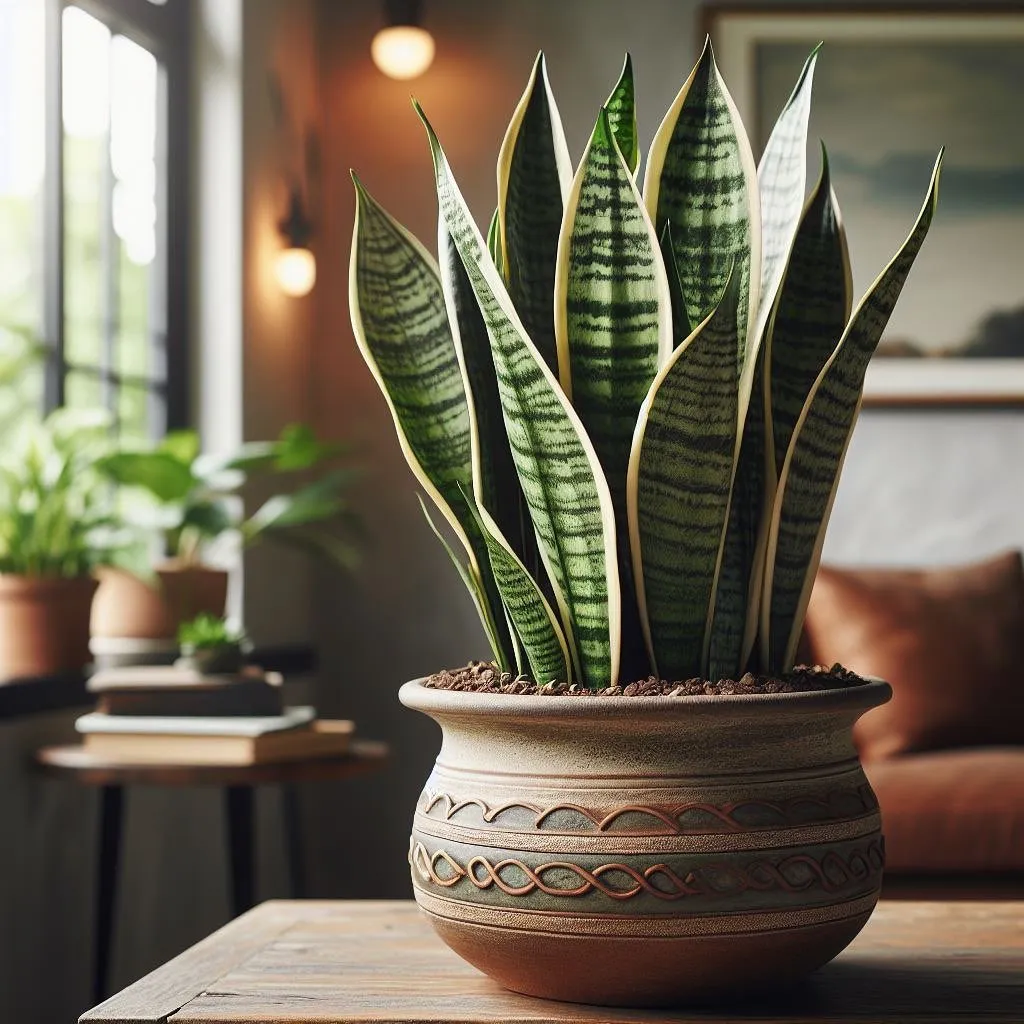
When caring for snake plants, it’s important to take into account their temperature and humidity requirements. While snake plants can adapt to a wide range of conditions, these factors can influence their watering needs. Understanding how temperature and humidity affect your snake plant will help you maintain its health and thriving growth.
Temperature Requirements
Snake plants can tolerate different temperature levels, but the temperature in which they are placed can affect their watering requirements. In warmer temperatures, snake plants will need more frequent watering to compensate for the increased evaporation and plant transpiration. On the other hand, in cooler temperatures, snake plants will require less water as the lower temperatures slow down their natural processes.
It’s recommended to keep snake plants in a temperature range of 60 to 85 degrees Fahrenheit (15 to 29 degrees Celsius). At these temperatures, they will thrive and maintain optimal hydration.
Humidity Requirements
Snake plants are adaptable to varying humidity levels, but these levels can influence their water needs. In high-humidity environments, where moisture is more abundant in the air, snake plants will require less frequent watering as the surrounding air provides added moisture to their leaves and soil. Conversely, in drier environments, where humidity is low, snake plants will need more frequent watering to prevent dehydration.
It’s important to strike a balance with the humidity level when caring for snake plants. Aim to maintain a moderate humidity level, around 40% to 50%, to keep your snake plant healthy and hydrated. If the humidity is higher or lower than these ranges, you may need to adjust your watering schedule accordingly.
Choosing the Right Soil for Snake Plants

When it comes to caring for snake plants, choosing the right soil is crucial. Snake plants, also known as Dracaena trifasciata, require well-draining soil to prevent root rot and maintain optimal health. Regular potting mix can cause excess water buildup, which can be detrimental to these low-maintenance plants.
To ensure your snake plant thrives, opt for a loose, well-draining soil mixture that includes sand. This type of soil will allow excess water to drain away from the roots, preventing waterlogging and potential root rot. Incorporating sand into the soil improves drainage and creates an environment that is better suited for snake plants.
If you want to further enhance drainage in your plant’s pot, consider adding large stones at the bottom. These stones will act as a barrier, preventing water from pooling at the bottom of the pot and ensuring that the soil remains well-drained.
Choosing the right soil for your snake plant is one of the key steps in providing the ideal growing conditions. By using a loose, well-draining soil mixture with sand and incorporating stones for improved drainage, you can help your snake plant thrive and prevent potential issues related to excess water buildup.
Pot Selection for Snake Plants

Choosing the right pot for your snake plants is important for their overall health and well-being. The pot you select can impact the watering needs of your plants, so it’s essential to make the right choice. Here are some factors to consider when selecting a pot for your snake plants:
- Pot size: Opt for a pot that allows enough room for your snake plant to grow slightly. However, avoid pots that are excessively larger, as they can lead to overwatering.
- Drainage holes: It is recommended to use pots with drainage holes. These holes allow excess water to drain out, resulting in drier soil and preventing waterlogged roots.
- Material: The type of material used for the pot can also impact the watering needs of your snake plants. Non-porous materials like plastic tend to retain more moisture, while porous materials allow for better drainage. Consider the watering requirements of your snake plant and choose a pot material accordingly.
- Aesthetics: While functionality is important, it’s also worth considering the aesthetics of the pot. Choose a pot that complements your overall decor and enhances the beauty of your snake plants.
Watering Techniques for Snake Plants

Proper watering techniques are essential for maintaining the health and vitality of your snake plants. By following the right methods, you can ensure that your plants receive the correct amount of water without the risk of overwatering. Here are some recommended watering techniques:
1. Bottom watering: Considered the best method for snake plants, bottom watering involves placing the pot in a tray of water and allowing the water to be absorbed through the drainage holes at the bottom of the pot. This ensures that the plant’s roots receive water directly and allows for thorough watering without the risk of overwatering. Remember to remove the pot from the water once the topsoil feels moist.
2. Watering with a jug or spray bottle: If your snake plant’s pot does not have drainage holes, you can water the plant using a jug or spray bottle. Pour water directly onto the soil, taking care to avoid getting water on the leaves. This method allows you to control the amount of water you give to the plant, preventing overwatering.
It is important to note that misting snake plants is not recommended as it can lead to overwatering. The foliage of snake plants tends to accumulate water, and excessive moisture can promote the growth of fungal diseases.
Signs of Underwatering and Overwatering

Proper watering is essential for the health of your snake plants. Understanding the signs of underwatering and overwatering can help you adjust your watering schedule accordingly.
When a snake plant is underwatered, it may exhibit the following signs:
- Brown, crispy leaf tips
- Dying leaves
- Hard, compacted soil
On the other hand, overwatering can lead to the following indications:
- Yellow leaves
- Mushy stems
- Waterlogged soil
- Root rot
Monitoring your snake plants for these signs is crucial for maintaining their health and preventing any further damage. Make sure to adjust your watering schedule based on these observations.
Recognizing Signs of Underwatering
When you notice brown, crispy leaf tips on your snake plant, it is a clear indication that it is not receiving enough water. Dying leaves and hard, compacted soil are also common signs of underwatering. If the soil feels dry to the touch, it’s time to water your plant.
Identifying Signs of Overwatering
If you observe yellow leaves, mushy stems, or waterlogged soil, your snake plant may be experiencing overwatering. Overwatering can lead to root rot, a condition that can be fatal for your plant if not addressed promptly. It’s important to adjust your watering frequency to avoid these issues.
Growing Snake Plants Indoors
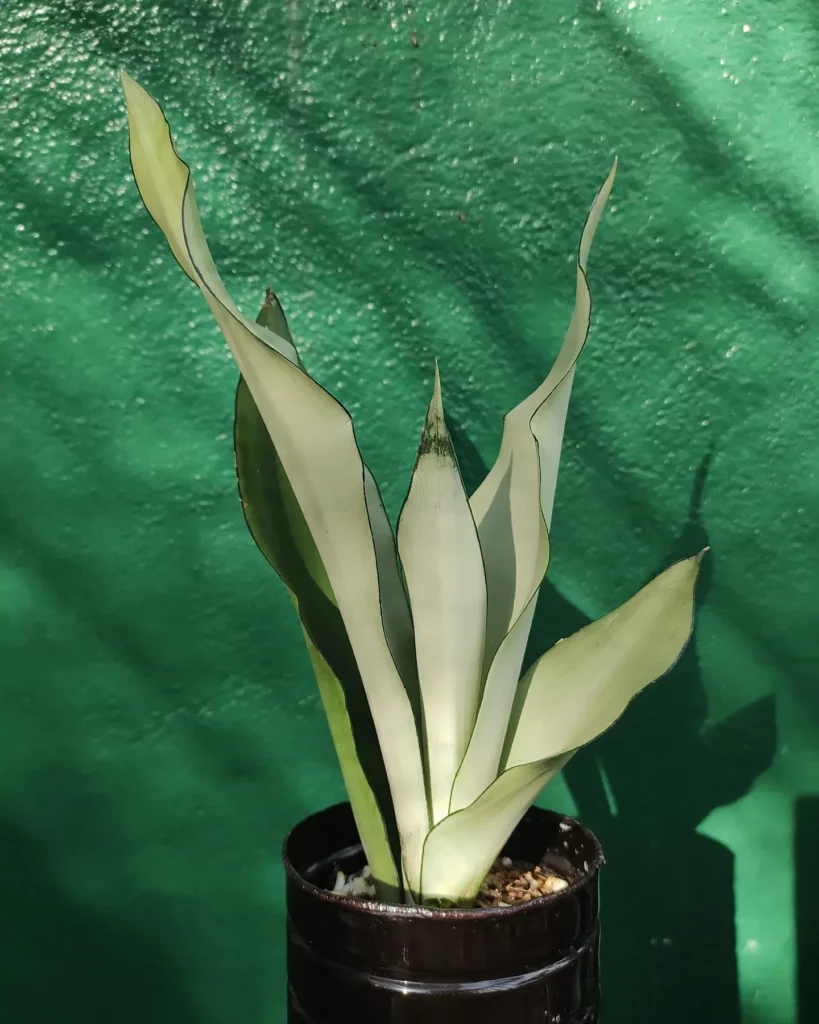
Snake plants are versatile and can thrive indoors, even in low light conditions. They are an excellent choice for those looking to add greenery to rooms with minimal natural light. While snake plants can tolerate low light, medium, non-direct sunlight is ideal for optimal growth. Placing them near a window with filtered sunlight can provide the perfect lighting conditions.
- When growing snake plants indoors, it is important to adjust the watering frequency based on the available lighting conditions. Snake plants in low light situations require less water compared to those in brighter light.
- Infrequent waterings, about once a week to ten days, are generally sufficient for snake plants grown indoors.
- Always check the moisture level of the soil before watering. Snake plants prefer slightly dry soil, so it’s essential to avoid overwatering, which can lead to root rot.
- Consider using a moisture meter to accurately determine when it’s time to water your snake plant.
Snake Plants in Unique Environments
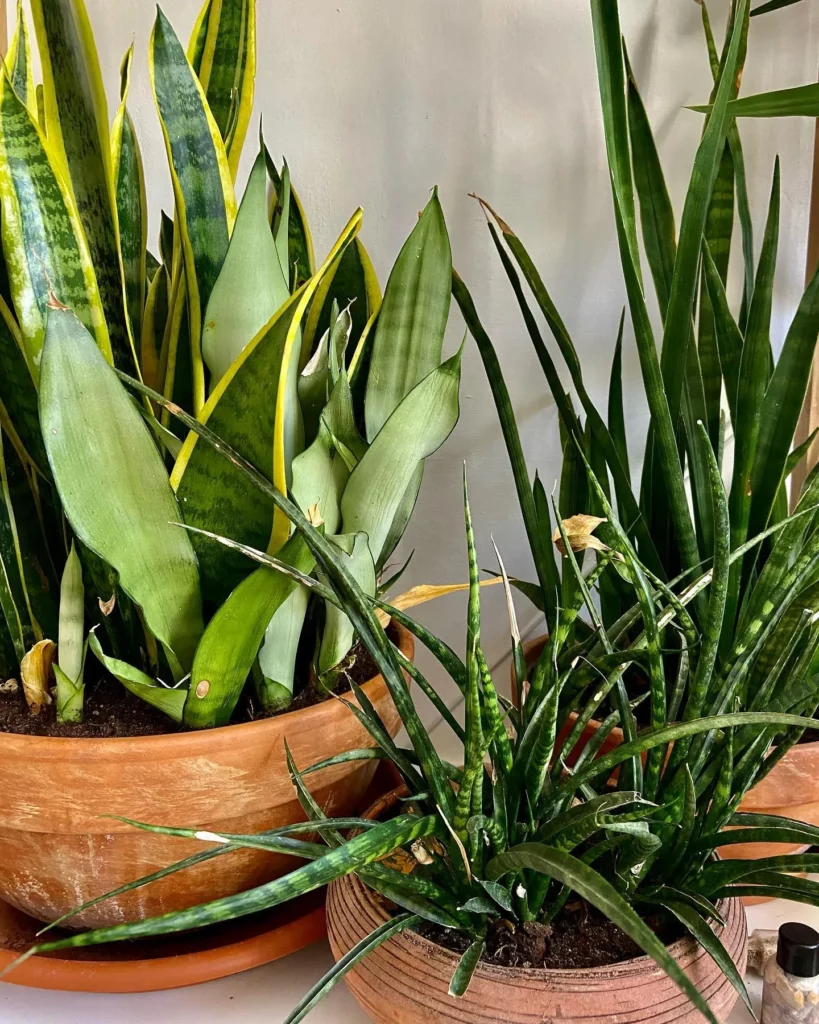
Snake plants, known for their ability to thrive in a variety of environments, can be successfully grown in unique settings such as bathrooms, where humidity levels tend to be higher. The resilient nature of snake plants makes them adaptable to different conditions. However, it is important to monitor their watering needs and adjust accordingly to ensure their optimal health.
In environments with higher humidity, snake plants may require less frequent watering compared to other areas. The increased moisture in the air contributes to the overall hydration of the plant, reducing the need for constant watering. It is essential to evaluate the soil moisture levels before watering to prevent overwatering.
Furthermore, snake plants can also be grown solely in water, without any soil. This unique method, known as hydroponics, requires special care and considerations. When growing snake plants in water, it is crucial to ensure that the roots are submerged without being completely immersed. Regularly check the water quality and change it every few weeks to prevent bacterial growth and maintain the plant’s health.
Snake Plant Care Tips for Pet Owners
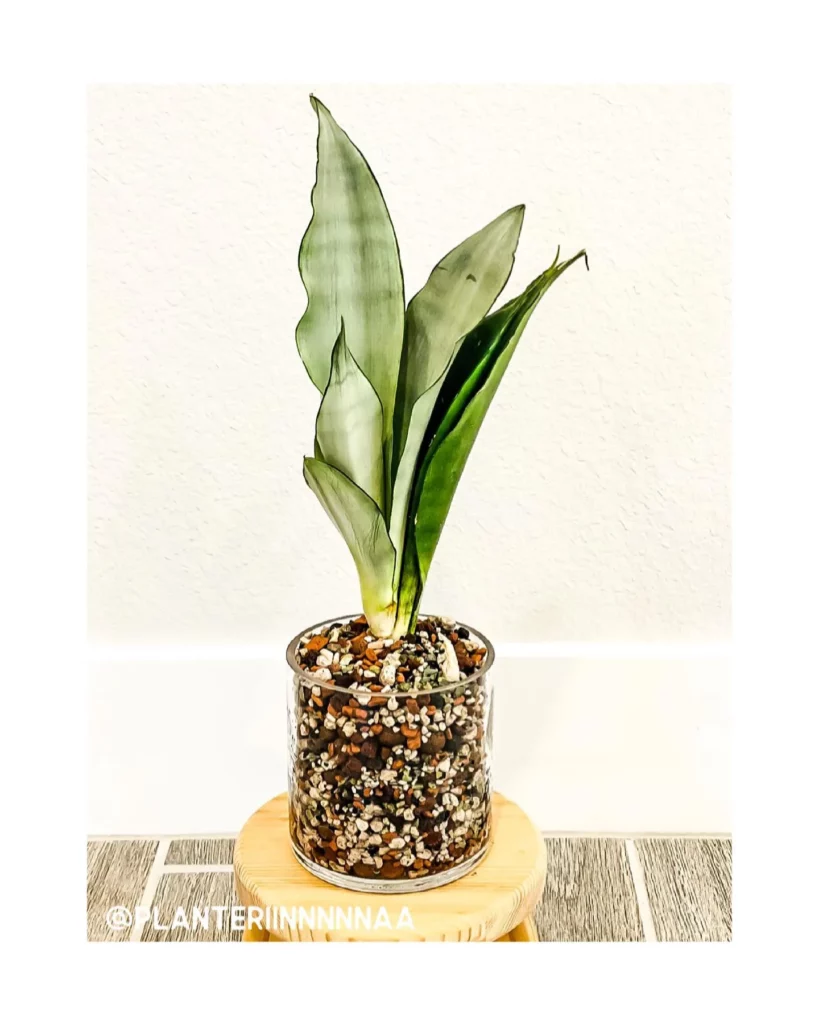
If you’re a pet owner considering adding a snake plant to your home, it’s important to be aware of the potential risks it can pose to your furry friends. Snake plants, scientifically known as Dracaena trifasciata, are considered toxic to both people and animals.
While snake plant toxicity varies in severity depending on the individual and the amount ingested, it’s best to err on the side of caution, especially with small children and pets. Ingestion of snake plant leaves can cause discomfort in pets, such as mild gastrointestinal upset, drooling, or vomiting.
To ensure the safety of your pets, it’s recommended to keep snake plants out of their reach. Consider placing them in areas where your pets cannot easily access or even consider alternative pet-friendly plants.
FAQ
How often should I water my snake plant?
Snake plants should be watered once the soil has completely dried out. During the spring and summer, when they have increased light and growth, they may need to be watered once a week. In the fall and winter, when light and growth decrease, watering can be reduced to once every two to three weeks. It is generally better to underwater a snake plant than to overwater it.
What factors influence a snake plant’s watering needs?
Several factors influence a snake plant’s watering needs, including the amount of light it receives, temperature, humidity, and the type of soil and pot used. Plants exposed to more light, warmer temperatures, and higher humidity will require more water, while plants in low light conditions and cooler temperatures will need less water. Well-draining soil and pots with drainage holes can also affect watering frequency.
What considerations should I keep in mind when planting and potting snake plants?
Snake plants should be planted in sandy, well-draining soil to prevent excess moisture around the roots. The type of pot used can also impact watering frequency. Terracotta pots absorb moisture, causing the soil to dry faster, while plastic pots retain more moisture. Pots with drainage holes allow excess water to drain, resulting in drier soil, while pots without drainage holes can hold excess water, leading to overwatering.
What are some care tips for watering snake plants?
It is generally better to underwater a snake plant than to overwater it. Signs of underwatering include brown, crispy leaf tips, dying leaves, and hard, compacted soil. Signs of overwatering include yellow leaves, mushy stems, waterlogged soil, and root rot. Regular waterings once the soil has completely dried out and using a moisture meter can help determine the appropriate watering schedule.
What are the light requirements for snake plants?
Snake plants can tolerate a range of lighting conditions, from low light to bright, direct sun. However, the amount of light the plant receives will affect its watering needs. Plants in brighter light conditions will require more water, while those in low light conditions will need less. Medium, non-direct sunlight is considered ideal for snake plants.
How do temperature and humidity affect snake plant watering needs?
Snake plants can adapt to various temperature and humidity conditions, but these factors can affect their watering needs. Plants in warmer temperatures and higher humidity will require more water, while those in cooler temperatures and lower humidity will need less. It is important to consider these factors when determining the watering schedule for snake plants.
What type of soil is best for snake plants?
Snake plants require well-draining soil to prevent root rot. A loose, well-draining soil mixture with sand is recommended. Regular potting mix is not ideal as it can cause excess water buildup.
How should I choose the right pot for my snake plant?
The pot size should have enough room for the plant to grow slightly, but not excessively larger. Pots with drainage holes are recommended, as they allow excess water to drain, resulting in drier soil. Non-porous materials like plastic can retain more moisture, while porous materials allow for better drainage. Considering pot aesthetics that match the overall decor is also important.
What watering techniques are recommended for snake plants?
Bottom watering is a recommended technique for watering snake plants. This involves placing the plant’s pot in water and allowing it to soak through the holes at the bottom of the pot. This method ensures thorough watering while preventing overwatering. If the pot does not have drainage holes, watering with a jug or spray bottle, taking care to avoid getting water on the leaves, is an alternative method. Misting is not recommended as it can lead to overwatering.
What are the signs of underwatering and overwatering snake plants?
Signs of underwatering include brown, crispy leaf tips, dying leaves, and hard, compacted soil. Signs of overwatering include yellow leaves, mushy stems, waterlogged soil, and root rot. Monitoring for these signs is important to adjust the watering schedule accordingly.
How do I care for snake plants when growing them indoors?
Snake plants are suitable for indoor growth, even in low light conditions. They can be grown in rooms with minimal natural light, although medium, non-direct sunlight is optimal. Growing snake plants indoors requires adjusting watering frequency based on lighting conditions. Infrequent waterings, about once a week to ten days, should be sufficient.
Can snake plants be grown in unique environments?
Snake plants can adapt to various environments, including bathrooms where humidity levels may be higher. However, it is important to monitor watering frequency and adjust accordingly. Snake plants can also be grown in water alone, but this requires special care and considerations.
Are snake plants toxic to pets?
Yes, snake plants are considered toxic to both people and animals. It is important to keep them away from small children and pets, as ingestion can cause discomfort. Pet owners should exercise caution when having snake plants in their homes to ensure the safety of their pets.

